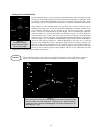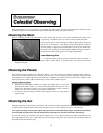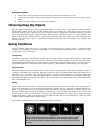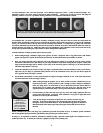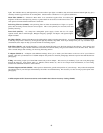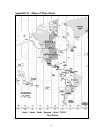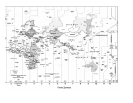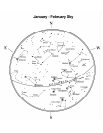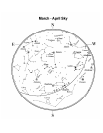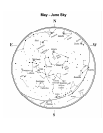A
A
p
p
p
p
e
e
n
n
d
d
i
i
x
x
B
B
-
-
G
G
l
l
o
o
s
s
s
s
a
a
r
r
y
y
o
o
f
f
T
T
e
e
r
r
m
m
s
s
gnitude The apparent magnitude that a sta ere observed from a standard distance of 10
parsecs, or 32.6 light-years. The a f the Sun is 4.8. at a distance of 10 parsecs, it
would just be visible on Earth on oonless night away from surface light.
The apparent size of a star's disk a perfect optical system. Since the star can never
be focused perfectly, 84 per cent trate into a single disk, and 16 per cent into
a system of surrounding rings.
A telescope mounting using two wing movement of the instrument in
Altitude and Azimuth.
In astronomy, the altitude of a celestial object is its Angular Distance above or below the celestial
iameter of a telescope's prim r; the larger the aperture, the greater the
telescope's light-gathering power
the relative brightn er celestial object as perceived by an observer on
nit of angular size equal to 1/6
nit of angular size equal to 1/3 egree (or 1/60 of an arcminute).
mall unofficial grouping of stars in the night sky.
A small, rocky body that orbits a
The pseudoscientific belief that th s of stars and planets exert an influence on human
affairs; astrology has nothing in common with astronomy
e between the Earth and the Sun. It is equal to 149,597,900 km., usually rounded off to
km.
The emission of light when charg solar wind slams into and excites atoms and
molecules in a planet's upper atmosphere.
The angular distance of an object g the horizon, measured from due north, between
the astronomical meridian (the ve center of the sky and the north and
south points on the horizon) and the vertical line containing the celestial body whose position is to
.
Binary (Double) stars are pairs o
around a common Center of Ma it is
called a multiple system. It is be rs belong to binary or
multiple systems. Systems with y a telescope are
called visual binaries or visual m tauri, is
earest example of a multiple star system, it consists of three stars, two very similar to
d one dim, small, red star orbiting around one another.
tor The projection of the Earth's equ y into two equal
hemispheres.
The imaginary projection of Ear .
Sphere An imaginary sphere surroundin h's center.
Collimation The act of putting a telescope's o
eclination (DEC) The angular distance of a celestial body north or south of the celestial equator. It may be said to
correspond to latitude on the surface of the Earth.
E -
Ecliptic The projection of the Earth's orbit on to the celestial sphere. It may also be defined as "the apparent
yearly path of the Sun against the stars".
Equatorial mount A telescope mounting in which the instrument is set upon an axis which is parallel to the axis of the
Earth; the angle of the axis must be equal to the observer's latitude.
A-
Absolute ma r would have if it w
bsolute magnitude o
a clear m
Airy disk produced even by
ight will concen
of the l
Alt-Azimuth Mounting independent rotation axis allo
Altitude
horizon.
Aperture the d ary lens or mirro
.
Apparent Magnitude A measure of
Earth.
ess of a star or oth
Arcminute A u 0 of a degree.
d
Arcsecond A u ,600 of a
Asterism A s
Asteroid star.
Astrology e position
Astronomical unit (AU) The distanc
150,000,000
Aurora ed particles from the
Azimuth eastwards alon
rtical line passing through the
be measured.
B -
Binary Stars f stars that, because of their mutual gravitational attraction, orbit
ss. If a group of three or more stars revolve around one another,
lieved that approximately 50 percent of all sta
individual components that can be seen separately b
ultiples. The nearest "star" to our solar system, Alpha Cen
actually our n
our Sun an
C -
Celestial Equa ator on to the celestial sphere. It divides the sk
Celestial pole th's rotational axis north or south pole onto the celestial sphere
Celestial g the Earth, concentric with the Eart
ptics into perfect alignment.
D -
D
42



